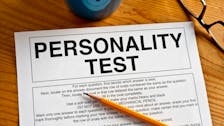The Neo Personality Inventory Test (2025 Guide)
All products and services featured are independently selected by WikiJob. When you register or purchase through links on this page, we may earn a commission.
- The History of NEO-PI
- What Does the Neo Personality Inventory Test Involve?
- What Does Neo Personality Inventory Test For?
- What Happens to My Results? (The NEO PI-R score)
- Can I Cheat the Neo Personality Inventory Test?
- What Will They Do with My Personality Information?
- How to Prepare for the Neo Personality Inventory Test in 2025
- Final Thoughts
The NEO-PI assessment is a psychometric testing tool used worldwide for general personality testing and pre-employment assessments as part of the recruitment process. It can also be used to help get a sense of which potential career paths best fit someone, and can accurately assess the personality traits of both adults and adolescents.
You may have heard it mentioned by its nickname – ‘The Big Five Personality Test’ – as it examines five disparate areas of personality to get an accurate measurement of character.
Since its initial inception in the world of academic psychology back in the 1970s, the NEO-PI test has emerged as a pre- and post-employment diagnostic tool to help maximize the productivity of a given workforce.

The History of NEO-PI
In the mid-1970s, psychologists Paul Costa and Robert McCrae attempted to identify broad traits existing across all people. By 1978, Costa and McCrae had only identified three traits they felt were consistent. The first two were Neuroticism (N) and Extraversion (E). Subsequent closer analysis led them to conclude a third, which they called Openness (O).
They were able to test a range of people using these three personality traits and created the Neuroticism-Extraversion-Openness Inventory (or NEO-I for short). This gave them a consistent model of personality with which to begin work.
Throughout the early 1980s, using information from the Baltimore study, Costa and McCrae identified two additional personality traits that existed for everyone they interviewed. These were Agreeableness (A) and Conscientiousness (C).
These two traits were then added to the existing model and, rather than call it NEOAC, the psychologists renamed it the NEO Personality Inventory. The model was revised in the early 1990s to include additional subsections for each of the traits. By 1992, Costa and McCrae published a version with additional sub-scales for the original factors. The 'revised NEO personality inventory' became the NEO PI-R test.
In the late 1990s, preliminary research showed that the test could be used successfully with children as young as ten but that the test itself would need some careful amendments. So, Costa and McCrae highlighted 48 ‘problem’ questions in the NEO PI-R.
Practice NEO Assessment with JobTestPrep
They trialed an initial test with 1,900 high school students in 2002 and made amendments to that test based on their findings. By the mid-2000s they had developed a model that was applicable for use with adults and adolescents alike.
This newest iteration was published in 2005 and named NEO PI-3. The NEO PI-3 has much better readability than its predecessors and comes with a glossary of terms to help younger subjects understand the test. It is suitable for use with those aged ten or higher, as well as those with learning disabilities, so it has a much wider user base than previous tests. It is this model that is currently used by employers and clinicians looking to assess personality.
At the same time as they developed the NEO PI-3, Costa and McCrae also developed a shortened version of the NEO PI-R. This is known as the NEO-FFI (FFI stands for ‘Five-Factor Inventory’). It was also subsequently revised and renamed as the NEO FFI-R.
It was realized (far too late!) that the original traits N, E and O, plus the new traits C and A can be easily combined to create the word OCEAN. Occasionally the test is referred to informally as the OCEAN test.
McCrae has worked independently with a number of other psychologists to determine whether the Five-Factor Model of personality applies cross-culturally, and the general consensus is that it does. More recently, in 2015, Piedmont and Braganza tentatively suggested through research that the NEO PI-3 would be suitable for use with people for whom English is not their first language.
What Does the Neo Personality Inventory Test Involve?
There are two types of test within the NEO PI-3. The first is the self-report test (Form S) and then a secondary test to be carried out by an observer (Form R).
Both forms have 240 descriptions of behavior from which the participant is asked to score themselves between 1 and 5, based on how much they agree or disagree with the statement presented. The shorter NEO-FFI only has 60 behavioral descriptions.
The full version of the test takes around 30 to 40 minutes to complete, the NEO-FFI takes around 15 minutes. Both these tests are available in paper format or can be done online.
If you need to prepare for a number of different employment tests and want to outsmart the competition, choose a Premium Membership from JobTestPrep.
You will get access to three PrepPacks of your choice, from a database that covers all the major test providers and employers and tailored profession packs.
What Does Neo Personality Inventory Test For?
The test is assessing the balance of the five individual factors that make up your personality.
-
'Openness’ measures your tendency to embrace novelty and how imaginative you are. High levels of openness can lead to unpredictability and a lack of focus. Low levels of openness can sometimes be perceived as closed-mindedness.
The six facets tested are: aesthetics, feelings, fantasy, actions, values and ideas.
-
‘Conscientiousness’ looks at your dependability; how self-disciplined you can be and how much you prefer planned behavior over being spontaneous. High conscientiousness can mean you’re perceived as stubborn, while low conscientiousness can mean people perceive you as slapdash or unreliable.
The six facets tested are: dutifulness, order, competence, achievement striving, deliberation and self-discipline.
-
‘Extraversion’ looks at your tendency to seek stimulation from other people. High-extraversion individuals can sometimes be attention-seeking or domineering. Low extraversion indicates that you’re quieter and more reflective but can occasionally be perceived as aloof.
The six facets tested are: assertiveness, gregariousness, excitement, warmth, positive emotions and activity-seeking.
-
‘Agreeableness’ looks at your tendency to be cooperative and compassionate rather than antagonistic or suspicious. High agreeableness can sometimes mean that you behave submissively and can be easily walked over. Low levels of agreeableness can indicate a predisposition to be argumentative or untrustworthy.
The six facets tested are: altruism, straightforwardness, trust, compliance, modesty and tender-mindedness.
-
‘Neuroticism’ looks at how prone you are to psychological stress. It examines your tendency to maintain a level of emotional stability and control your impulses. High-stability people are calm and steady, while low stability might suggest that the person is highly reactive and excitable.
The six facets are: angry hostility, anxiety, self-consciousness, impulsiveness, depression and vulnerability.
By carefully making an accurate assessment of these five personality factors, an accurate picture can be built up of how people think and behave.

What Happens to My Results? (The NEO PI-R score)
Scores for each section will be summarized in a report that can be issued to you or the employer, or both. This will include information on your personality type, spit into each of the five factors. These are marked as either Low, Medium or High with a brief description of the strengths associated with that score.
Reports are presented in a visual format, so you can easily see and make sense of your score in relation to the average.
Can I Cheat the Neo Personality Inventory Test?
The test’s accuracy relies heavily on people being genuine about their behavioral habits. It will not work on people who have psychopathology or who have become adept at deceiving others about their internal thought processes. Combining information from both self-reporting and external observation allows for a greater level of accuracy.
If more than 150, or less than 50, responses are ‘agree’ or ‘strongly agree’ then the test report will flag the need for caution in interpreting the results due to a question mark over the potential honesty of the candidate.
What Will They Do with My Personality Information?
The test report will help employers identify an employee’s (or potential employee’s) strengths and weaknesses so they can make better decisions about where to most effectively deploy them within a company. HR departments will also be able to identify potential personality clashes long before they become apparent in the workplace environment.
The information will also be beneficial to you as an individual. You can have an honest and open discussion about what motivates you and it may help you to understand your colleagues better.
How to Prepare for the Neo Personality Inventory Test in 2025
There are resources online where you can see sample questions and do a practice test in advance of your interview. You do not need to revise. The test is not a pass or fail test, it is a measurement of your personality type. This also means that there are no ‘wrong’ types of personality. Everyone is different.
This test is a diagnostic tool designed to help others understand how you think and who you are. If you choose to second-guess the test and present deliberately false answers then you may secure yourself a job in the short term, but chances are you will end up in a position that will not be suited to you.
The best thing to do when faced with an NEO PI-3 test is simply to go in with an open mind and answer the questions as honestly as you can.
If you’re still anxious about sitting the test, we recommend that you spend some time looking at similar personality tests. Online tests like the IPIP NEO PI-R will provide a very similar test experience and will give you a flavor of what the test will be like.
If you’re interested to see what sort of report is generated once you’ve sat the test, you can view a sample report. You can also purchase practice resources from suppliers like JobTestPrep.
Final Thoughts
Being asked to sit an NEO PI-3 or NEO PI-R assessment is not something to panic about. It can be exciting to learn new things about yourself and your personality. Getting to see how you compare psychologically with others in the workplace, or in wider society, is rewarding.
The more we know about how we think and the sort of people we are, the better equipped we can be to handle whatever life happens to throw at us.







